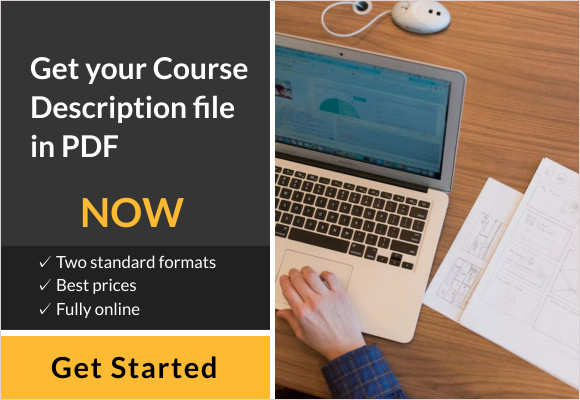Understanding Course Syllabi
Understanding course syllabi is essential for international students navigating the university admissions process. A course syllabus outlines the academic expectations, content, and assessment methods for a specific course, playing a critical role in the evaluation of prospective students. Admissions committees often rely on syllabi to assess the rigor and relevance of an applicant’s previous academic experience in relation to the programs they wish to pursue. For international students, familiarity with syllabi allows them to identify how their prior coursework aligns with the new academic environment they’re entering. This knowledge can enhance not only their applications but also their preparedness for studying abroad. Highlighting relevant courses on their applications, supported by the syllabi, can demonstrate a candidate’s readiness and compatibility with the desired program’s educational goals.
Furthermore, university admissions often ask for official syllabi to verify coursework and prerequisites. This practice underscores the importance of thorough understanding and documentation of one’s previous studies. A comprehensive grasp of this material also equips students to ask informed questions during admissions interviews or when reaching out for guidance, thereby further solidifying their commitment and interest in the institution. In summary, strategic use of course syllabi can significantly bolster an international student’s admissions application, showcasing their academic preparedness and helping institutions make informed decisions about their candidacy. For more detailed insights, check out resources on crafting strong applications through the understanding of course structures at Course Description.
Essential Components of a Course Syllabus
A well-crafted course syllabus is essential for guiding students through their educational experience, serving as a roadmap for what to expect and how to succeed. Key components of a syllabus include:
Learning Objectives
These are clear statements that outline what students are expected to learn or achieve by the end of the course. They provide a framework for both instructors and students, ensuring alignment between teaching methods, activities, and evaluations. Well-defined learning objectives facilitate better planning for coursework and help students connect the material to their educational goals [Source: Edutopia].
Assessment Methods
Assessment methods detail how students will be evaluated throughout the course. This can include exams, quizzes, projects, or participation grades. Clear descriptions of these methods help students understand what is expected for success and how their performance will be measured. Variety in assessment types can cater to different learning styles, providing multiple pathways for students to demonstrate their understanding [Source: ResearchGate].
Required Materials
Listing required materials, such as textbooks, software, or other resources, ensures students come prepared and understand what tools they will need to succeed. It also helps foster a learning environment where students can engage with the content directly and effectively. Moreover, understanding required materials ahead of time allows students to plan their purchases and manage costs [Source: Course Description].
By familiarizing themselves with these elements, prospective students can navigate their course selections and prepare effectively for their academic journey. Understanding the structure and purpose of syllabus components plays a crucial role in achieving success in higher education.
Navigating Prerequisites, Corequisites, and Electives
To effectively interpret course prerequisites, corequisites, and elective options, students must first understand these terms. Prerequisites are courses or requirements that must be completed before enrolling in another course, ensuring students have the necessary foundational knowledge. Corequisites, on the other hand, are courses that must be taken simultaneously with another course, often to enhance understanding through concurrent learning.
When selecting electives, students should evaluate how these courses align with their academic goals and interests. Electives allow for exploration beyond core requirements and can enrich a student’s educational experience. A strategic approach involves assessing which elective courses complement a student’s major, fulfill graduation requirements, or provide skills relevant to future careers.
Additionally, understanding the implications of prerequisites and corequisites can enhance a student’s academic trajectory. For instance, failing to complete a prerequisite can delay graduation, while taking electives that pique interest can lead to new passions or career paths. According to research, students who actively engage in course selection with an understanding of prerequisites and corequisites tend to have a more fulfilling educational experience and better academic outcomes [Source: HuffPost].
For more on selecting the right electives aligned with your goals, refer to our article on elective course strategies.
Aligning Academic Achievements with Course Syllabi
Aligning personal academic achievements with the expectations laid out in course syllabi can significantly enhance a student’s university admissions profile. Here are effective strategies to ensure that your academic efforts resonate with these expectations.
- Understand Course Objectives: Thoroughly review the syllabus for each course to grasp the specific learning objectives and evaluation criteria. Highlight key topics and skills that the instructor emphasizes. This understanding allows you to tailor your study habits and project work to align with course expectations.
- Set Specific Goals: Once you’ve identified the expectations outlined in the syllabus, set SMART (Specific, Measurable, Achievable, Relevant, Time-bound) goals that reflect these objectives. For example, if a course stresses analytical writing, aim to write a specific number of papers that meet those criteria by mid-semester.
- Engage Actively: Participate actively in class discussions and group projects. This engagement not only shows your commitment but also provides deeper insights into course content, potentially enhancing your academic performance.
- Utilize Resources: Make use of office hours and academic resources like tutoring centers or workshops offered by your university. Engaging with instructors and peers can clarify complex topics directly related to your course syllabus.
- Document Your Achievements: Keep a comprehensive record of your academic successes, including projects, presentations, and any coursework completed that exceeds syllabus expectations. This documentation can be pivotal when you’re preparing your university application, allowing you to present a well-rounded profile.
- Seek Feedback: Regularly seek feedback from instructors on your assignments. Constructive criticism can help you realign your work to better meet course standards, ultimately strengthening your application profile.
- Reflect on Learning: After completing each course, take time to reflect on how well you met the syllabus expectations. This practice can help you understand areas of strength and those needing improvement, which is crucial for continuous academic growth.
By implementing these strategies, you can effectively align your academic journey with course syllabi, making you a more competitive applicant for university admissions. For more insights on academic success, check out our guide on Effective Study Techniques.
Utilizing Resources for Course Insight
For those navigating the college admissions process, using the right tools and resources can make a significant difference. Here are some valuable websites that offer insights into course syllabi and academic programs:
- Course Description – This comprehensive resource provides detailed descriptions of courses across various academic disciplines, helping students understand the curriculum and faculty expectations at different institutions.
- Open Courseware (OCW) – Platforms like MIT OpenCourseWare offer free lecture notes, exams, and videos from a wide array of MIT courses. This initiative helps students explore course content without enrolling in the program.
- RateMyProfessors – This site allows students to view and rate college professors, providing insights into teaching styles, difficulty levels, and course engagement. It aids prospective students in gauging their prospective professors and course loads.
- College Navigator – Maintained by the National Center for Education Statistics, this tool helps students search for colleges based on various criteria, including program offerings, financial aid, and enrollment statistics, supporting informed decisions.
- Niche – This platform not only ranks colleges but also collects reviews and statistics on specific programs. Students can find detailed information regarding course offerings and institutional culture.
These resources, particularly the course descriptions from the first link, can significantly aid prospective students in their research, making the admissions process smoother and more informed.










